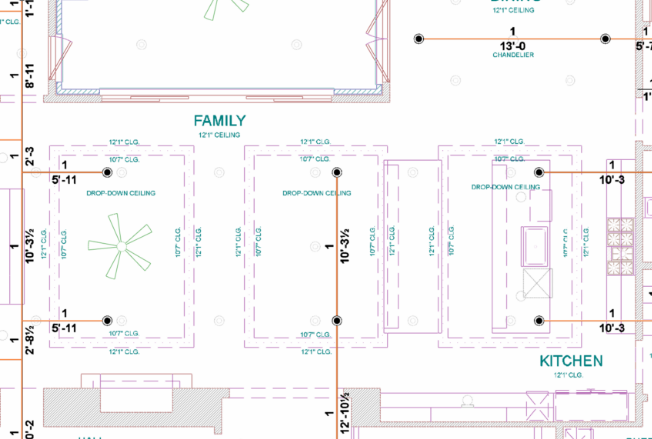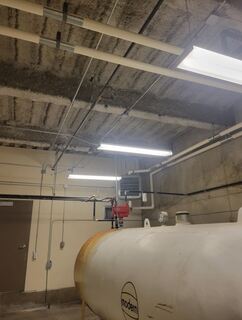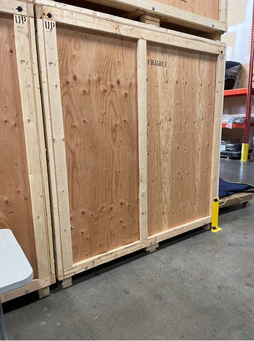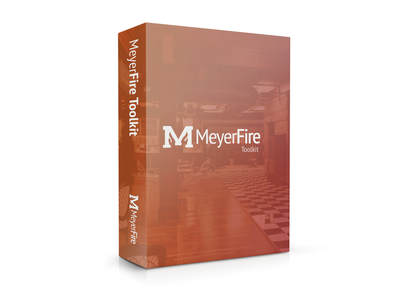|
Can an industrial complex/region be considered suburban and rural, thus falling under the application of NFPA 1142?
What is the extent of when NFPA 1142 could be applied? Thanks in advance. Sent in anonymously for discussion. Click Title to View | Submit Your Question | Subscribe
4 Comments
Can a hydrant flow test (for the purposes of a fire sprinkler design) be conducted using a single hydrant?
If so, how is this actually done? Is it recommended? Thanks in advance. Sent in anonymously for discussion. Click Title to View | Submit Your Question | Subscribe I'm reviewing a fire sprinkler system under 2019 NFPA 13D for a single family dwelling. The living room basically has "reverse" ceiling pockets as the pockets are lower than the rest of the ceiling (pockets are at 10'-7", the ceiling is at 12'-1"). They have 2 sprinklers in each of the 3 lower sections of the ceiling but no sprinklers in the higher areas (except for a room to the side but in the same area). It seems off to me to omit sprinklers in the higher area but can't figure out how to apply a code to it. Would you apply the ceiling pocket rule if the higher area exceeds 100 cubic feet or is it fine as designed? Thanks in advance. Sent in anonymously for discussion. Click Title to View | Submit Your Question | Subscribe Fighting with myself this morning on whether interior horn/strobes are required for a project going on in my jurisdiction.
It's a 14,000 sqft tenant space in a sprinklered strip mall. The landlord fire alarm panel only monitors sprinkler system and three duct detectors. Under the 2018 IBC / IFC, no manual fire alarm system is required. Section 907.2.7.1 adds confusion for me regarding occupant notification. It allows an exception for a constantly attended locations to provide instructions in the event of alarm activation from manual pull OR waterflow. Given no constantly attended location exists, would the sprinkler system in this case require interior horn/strobes within the tenant space? The exterior bell is on the rear of the building with a landlord maintenance space in-between. If there was a sprinkler flow in the adjacent tenant space, how would the space in question be notified to evacuate? The architect on the project feels nothing is required inside the space. Maybe I'm taking a common sense approach to this but want to be sure I have code to back me up in requiring interior occupant notification. This is for a discount retail tenant. Thanks in advance. Sent in anonymously for discussion. Click Title to View | Submit Your Question | Subscribe A couple of FM Global questions:
Does FM Global have any requirements for overhead doors? (such as NFPA 13: 8.4.2(3) (2013-2016), 10.3.2(3) (2019)) Does FM Global have any restrictions for private fire service mains under buildings? (such as NFPA 13: 10.4.3 (2013-2016), 6.4.3 (2019)) Can't seem to find relevant material there. Thanks in advance! Sent in anonymously for discussion. Click Title to View | Submit Your Question | Subscribe We have a 4-story building with Levels 2 through 4 being residential. The first floor is retail and amenities. The 4th floor has vaulted ceilings and is essentially open as a gabled roof deck.
The plan was to use CPVC for all residential floors, and at the top floor to run pipe level and extend sprigs up to catch the peak and higher roof areas. Is this acceptable? Sent in anonymously for discussion. Click Title to View | Submit Your Question | Subscribe Is it worth installing a nitrogen generator for small residential dry pipe systems with less than 50 gallons?
We have about 175 homes with dry pipe systems in our jurisdiction. Would a nitrogen generator be the best solution for corrosion protection? Thanks in advance. Sent in anonymously for discussion. Click Title to View | Submit Your Question | Subscribe I am working on a project that has Fire-Retardant-Treated (FRT) wood that is over 50-years old.
The wood is installed in a conditioned space (not subjected to sunlight or rain, heated and cooled with moisture levels maintained like any building). The wood had different manufacturers with varying labels, but two did list the chemical used as PROTEXOL. I'm struggling to find information for the efficacy of the FRT wood after so many years. Do you have any information or recommendations for recertifying FRT wood with lab testing for the presence of the correct chemicals or subjecting samples to ASTM/UL/NFPA? Any help is greatly appreciated. Sent in anonymously for discussion. Click Title to View | Submit Your Question | Subscribe A fire department connection can be used with a bypass to facilitate a forward flow test of the backflow preventer as described in NFPA 25 Annex A.
Is there anything prohibiting the FDC from being used as a drain outlet, as well? Sent in anonymously for discussion. Click Title to View | Submit Your Question | Subscribe We are building a church under the 2018 IBC. It's an A-3 occupancy. We're trying to figure out if we really need a fire suppression system in the whole building and if there are any alternatives given the exorbitant costs to cover the whole building.
Based on my research the only two things that would necessitate a system is the fact that we have a choir loft up a flight of stairs with no fire escape (except the staircase) and the main body of the chapel could possibly fit about 300 people. We were wondering if we could just cover the fire areas without covering the whole building? We've gotten differing answers from both the county and fire marshal. I contacted the state department for a final verdict but I could really use some expertise input. Our pastor is concerned that we may be getting upsold into a product that we may not need, especially since they wanted sprinklers in an inaccessible crawl space. Thanks for all the help, this site has been extremely helpful. Do let me know if there are any viable alternatives and any other way to help on costs. Sent in anonymously for discussion. Click Title to View | Submit Your Question | Subscribe I have a project that I am looking at that right now and it is supplied by a private 75,000 gallon water tower for their current systems and domestic water supply. There's no city tie-in, just fed from their private well.
They are upgrading and adding sprinklers in other areas and will need a fire pump. The hazard classification will require 120 minutes of a water supply. That 120 minute supply is roughly just under 250,000 gallons. Can I somehow tie into the water tower underground that comes into the building and connect a new tank that will supply the new fire pump to meet these requirements? That supplies me with 75,000 gallons, so presumably I would only need another 175,000 gallon tank. Or do I need a separate tank for the 250,000 gallons? I am not sure if the well pump into the tower matters or if that can be figured into the gallons needed as well. Looking for advice on how to approach this situation. Thanks in advance. Sent in anonymously for discussion. Click Title to View | Submit Your Question | Subscribe We're designing an ESFR system for a warehouse where the city water can supply enough to meet our 2,000 gpm demand, but the local ordinances prevent a fire pump from being supplied directly by city water lines.
We are planning to install a 13,000 gallon bolted water tank for this reason. NFPA 22 (2013 Edition) Section 4.1.4 allows tanks to be sized so that the store supply plus automatic fill can support demand over the required duration. However, Section 4.1.5 requires break tanks to be sized for a 15-minute duration of 150% of the fire pumps rated capacity. 13,000 gallons is enough to supply our demand with the added city refill rate, but is not enough on its own for a 15-minute pump supply duration. Does Section 4.1.5 apply to my situation? I'm not using an actual break tank, but the bolted tank is being used in a break tank-like fashion. Thanks in advance. Sent in anonymously for discussion. Click Title to View | Submit Your Question | Subscribe Question submitted from Joe Meyer as pertains to a whitepaper in the works for ESFR systems:
Many of us have come to the realization that with ESFR systems, the "building is designed around the sprinkler." That adage seems to be more and more true with each ESFR system. What advice would you offer to architects and structural engineers on the "best ways" to design around ESFR; making the building more ESFR-friendly? Thanks in advance! Sent in anonymously for discussion. Click Title to View | Submit Your Question | Subscribe The local fire department wants us to document that a facility provides the minimum fire flow for their outdoor mulch storage piles.
I can't find any NFPA requirements for wood chip or mulch storage; only setback distances. Anyone have input on how to establish minimum Fire Flow for outdoor storage like this? Thanks in advance. Sent in anonymously for discussion. Click Title to View | Submit Your Question | Subscribe We have a 4-story apartment building with commercial units on the first floor, residential on all floors above.
The architect is providing a 2-hour separation at the 2nd floor deck (concrete on a metal deck), and is requesting NFPA 13 for the 1st floor and NFPA 13R for the units above. The AHJ came back and requested NFPA 13 for the corridors and elevator lobbies on floors 2-4 to avoid separation of elevator lobbies from corridors, but still keep the draft/smoke control doors at the hoistways. Can NFPA 13 and 13R be mixed on the upper levels? Is this approach valid from a code-standpoint? Is there validation or different approaches that would need to take place to make this happen? Thanks in advance. Sent in anonymously for discussion. Click Title to View | Submit Your Question | Subscribe Last week someone asked a great question about the limits of where NFPA 20 starts and stops.
In a similar vein, what are the limits of where NFPA 22 and NFPA 24 start and stop for a typical system with a water storage tank, fire pump and private mains? We had a question at work yesterday as to whether NFPA 24 or NFPA 22 applies to pipe before a water storage tank. It'd be helpful for us to understand these limitations in addition to the conversation last week. Thanks in advance! Sent in anonymously for discussion. Click Title to View | Submit Your Question | Subscribe We have a project design for a single room (26'-0" x 14'-6", height of 13'-2"). The room is noncombustible and is solely for the storage of one large metal diesel fuel storage tank in the basement of a hospital. The tank is under 8-ft tall. I have researched NFPA 13, 16, and NFPA 30. I used the tables for sprinkler type and criteria.
My confusion is the amount of storage and the size of the tank. The tables in NFPA 30, starting with Chapter 16.5.2.1, have guidelines for tank sizes up to 60 gallons only. This is a much larger, metal, stationary tank (3,000 gallons). What table or design criteria can be used? K-factors of 8.0 or 11.2 - and 0.30 or 0.40 density? We will be using foam for this project and I just want to be sure that I'm approaching and educating myself for the correct approach without missing or violating limitations within NFPA 30 (or the other standards). Thanks for the help! Sent in anonymously for discussion. Click Title to View | Submit Your Question | Subscribe We are doing a design for high-piled storage of Class I-IV commodities in a palletized arrangement. Storage is 15'-6" high. Would this storage (image below) also count/qualify as "encapsulated" under NFPA 13 (2013 Edition)? The client is a remediation company that uses heavy plywood crates to temporarily store items for their clients (which are common household items).
Section 3.9.1.12 includes "a combustible package" as a method of encapsulation, but annex A.3.9.1.12 says "The term encapsulated does not apply to plastic-enclosed products or packages inside a large, non-plastic, enclosed container.". Does a heavy plywood crate count as encapsulation, or not? This matters because at 15.5 feet in height I would have to use the flow densities from 14.2.5 instead of the reduced ones from 14.2.4 if it does. Thanks very much for your help. Sent in anonymously for discussion. Click Title to View | Submit Your Question | Subscribe I had a discussion with other peers about the hazard classification of nail salons (not a hair salon in this case).
Peer 1 argued for OH2. It's semi-mercantile, typically behind the front desk they sell beauty care products of moderate flammability. Peer 2 argued for OH1. It's not mercantile like we're used to; it's not aisles, it's a couple of cabinets by a front desk in the majority of cases. But the chemical storage in those beauty products to him says he can't go all the way light hazard even with mostly open floor space. Peer 3 argued for Light Hazard. This is no different from a doctor's office. They have cabinetry, they have equipment, they have flammable chemicals (alcohol at the very least). Plus he'd really like to be able to use CPVC pipe for the light hazard occupancy to save money. I see the argument for all three, so I figured I'd offer it to more peers. See where folks land on this. Thanks in advance. Sent in anonymously for discussion. Click Title to View | Submit Your Question | Subscribe Shout out to another month of great discussion! The questions and quality contributions keep getting better; thank you to all of you for sharing ideas and helping everyone do fire protection a little bit better.
Are the requirements for sprinklers in an 'Extraction Booth' the same as a 'spray booth'?
I have a customer looking to add wet pipe coverage to their new 'solvent extraction booth' which appears to be the same as a paint spray booth. The customer is claiming that the AHJ told them that there is no requirement for a separate riser as it's not technically a paint booth. I can't find any supporting documentation of this in any NFPA standard. The closest example I can find is a paint spray booth which appears to require a dedicated riser no matter what. Anybody have any experience with this? Thanks in advance. Sent in anonymously for discussion. Click Title to View | Submit Your Question | Subscribe We have an NFPA 13R (2019), 4-story apartment. It's Group R-2, Class V-A construction, with open interior breezeways hallways in "garden style". Combined, all floor levels are ~60,000 sqft (~15,000 sqft per floor).
The design includes one 320 sqft storage room and about four 55 sqft storage closets in the interior breezeway per floor that tenants can rent if they choose. All storage rooms and closets have gypsum ceilings. From what I can tell, NFPA 13R-2019 doesn't really address storage like this, so I'd assume to revert back to NFPA 13 in order to protect? Is that a correct approach? Due to the combustible construction - would that trigger coverage above and below ceilings in these spaces? And then - am I permitted to tie into an NFPA 13R system, or would this even need a separate riser? We could have two scenarios - one with rooms 2-hour fire resistance rated from the R-2, and another where it's incidental and not separated. Thanks in advance for your input. Sent in anonymously for discussion. Click Title to View | Submit Your Question | Subscribe Where does NFPA 20's jurisdiction end?
Is it possible to have pressure reducing valves in a suppression system, downstream of a fire pump? NFPA 20 seems to not allow for that, but does NFPA 20 apply downstream? If so, how far? In the standard it says up to a last control valve or something like that - what control valve(s) is it referring to? Thanks in advance. Sent in anonymously for discussion. Click Title to View | Submit Your Question | Subscribe |
ALL-ACCESSSUBSCRIBESubscribe and learn something new each day:
COMMUNITYTop June '24 Contributors
YOUR POSTPE EXAMGet 100 Days of Free Sample Questions right to you!
FILTERS
All
ARCHIVES
July 2024
PE PREP SERIES |
MeyerFire
- Blog
- Forum
-
THE TOOLKIT
- SUBMIT AN IDEA
- BACKFLOW DATABASE*
- CLEAN AGENT ESTIMATOR*
- CLOUD CEILING CALCULATOR
- DOMESTIC DEMAND*
- FIRE FLOW CALCULATOR*
- FIRE PUMP ANALYZER*
- FIRE PUMP DATABASE*
- FRICTION LOSS CALCULATOR
- HANGER SPACER*
- IBC TRANSLATOR*
- K-FACTOR SELECTOR*
- NFPA 13 EDITION TRANSLATOR ('19 ONLY)
- NFPA 13 EDITION TRANSLATOR ('99-'22)*
- LIQUIDS ANALYZER*
- OBSTRUCTION CALCULATOR
- OBSTRUCTIONS AGAINST WALL*
- PITOT CONVERTER
- PLUMBING FIXTURE COUNTS
- QUICK RESPONSE AREA REDUCTION
- REMOTE AREA ANALYZER*
- SPRINKLER DATABASE*
- SPRINKLER FLOW*
- SYSTEM ESTIMATOR*
- TEST & DRAIN CALCULATOR
- THRUST BLOCK CALCULATOR
- TRAPEZE CALCULATOR
- UNIT CONVERTER
- VOLUME & COMPRESSOR CALCULATOR
- WATER STORAGE*
- WATER SUPPLY (US)
- WATER SUPPLY (METRIC)
- UNIVERSITY
- PE Exam
- LOGIN
- PRICING
- OUR CAUSE

MeyerFire.com is a startup community built to help fire protection professionals shine.
Our goal is to improve fire protection practices worldwide. We promote the industry by creating helpful tools and resources, and by bringing together industry professionals to share their expertise.
MeyerFire, LLC is a NICET Recognized Training Provider and International Code Council Preferred Education Provider.
All text, images, and media Copyright © 2016-2024 MeyerFire, LLC
We respect your privacy and personal data. See our Privacy Policy and Terms of Service. The views, opinions, and information found on this site represent solely the author and do not represent the opinions of any other party, nor does the presented material assume responsibility for its use. Fire protection and life safety systems constitute a critical component for public health and safety and you should consult with a licensed professional for proper design and code adherence.
Discussions are solely for the purpose of peer review and the exchange of ideas. All comments are reviewed. Comments which do not contribute, are not relevant, are spam, or are disrespectful in nature may be removed. Information presented and opinions expressed should not be relied upon as a replacement for consulting services. Some (not all) outbound links on this website, such as Amazon links, are affiliate-based where we receive a small commission for orders placed elsewhere.





















 RSS Feed
RSS Feed
